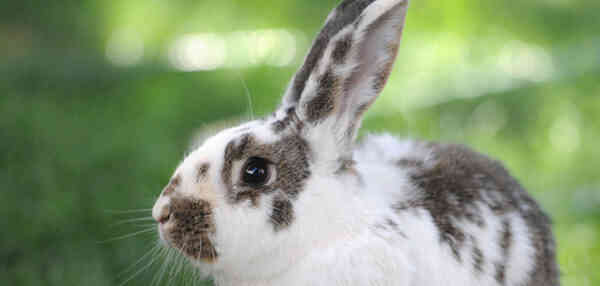Rabbits are not only valuable fur, but also amazingly interesting animals. In general, they are not distinguished by high intelligence, but at the same time, nature perfectly adapted them to survival. They reproduce so quickly that they successfully capture vast habitats, and many people also keep them as domestic animals. And it’s not just about farmers – some breeds of rabbits are popular as pets.
Interesting facts about rabbits
- They are often confused with hares, but they are not. There are many differences between them, despite the fact that they are relatives in a biological sense.
- Wild rabbits can reach speeds of up to 50-55 km/h when running.
- All 16 species of American rabbits live in forests and swamps, and do not dig holes for themselves. In addition, they are great at climbing trees. And outside of North America, all rabbits live exclusively in holes, and cannot climb trees (interesting facts about North America).
- Rabbits and rodents like hamsters and rats have a common ancestor that lived many millions of years ago. However, they still do not belong to rodents.
- More than 50% of all rabbits in the world live in North America.
- Wild European rabbits dig deep and branched burrows, which sometimes combine into entire underground cities.
- American rabbits live alone, while all other species usually exist in groups.
- In the wild, rabbits are hunted all and sundry. The only thing that saves them from extinction is that they multiply at an incredible rate.
- In case of danger, these animals prefer to run away, but if they are driven into a corner, they go for broke and try to defend themselves. With a blow of powerful hind legs armed with sharp claws, a harmless rabbit may well kill or seriously injure a predator.
- They chew very quickly. When a rabbit feeds, its jaw makes an average of two chewing movements per second, and it can chew for a very long time without getting tired.
- The weight of adults of the largest wild species usually does not exceed 3.5-4 kg , but domestic rabbits can weigh up to 10-11 kg.
- There were no rabbits in Australia until they were brought there in the late 18th century. Since then, they have proliferated monstrously and become a serious threat to the ecosystem. They were shot, protective fences were erected against them, and in the middle of the 20th century a special virus was spread among them, which reduced their population to acceptable values (interesting facts about Australia).
- Due to the fact that rabbits are easy prey, on average they live in the wild for no more than a year. But their home species can live for 10-12 years, if you surround them with appropriate care. The official record is 19 years.
- Their hind legs allow them to jump up to 2-3 meters in length and 1-1.5 meters in height.
- Nature has adapted rabbit eyes for excellent visibility so that they can always see a creeping predator. So, rabbits can even see what is happening behind them without turning their heads.
- Like people, these animals can actually die of fear in the event of a particularly strong fright.
- The pads of rabbit feet can become sweaty in hot weather.
- Female rabbits have a double uterus, which allows them to simultaneously carry two generations of offspring at once, and from different males.
- On average, rabbit ears are 8-12 centimeters long, but a domestic rabbit entered the book of records, whose ears reached a length of 80 centimeters.
- Some of their breeds become sexually mature as early as 3 months of age. This is partly what explains their fertility.
- Rabbits bring many offspring at one time, but the female herself usually cannot take out all the newborn rabbits. If you help her, they can all survive. The official birth record is 24 rabbits at a time.
- These animals drink a lot of water. So, a rabbit weighing a couple of kilograms can drink more than a dog five times its weight.
- In the era of sailing ships, in the 17-18 centuries, sailors often released rabbits on deserted uninhabited islands. This was done so that if people got on the island as a result of a shipwreck, they would have a source of food.
- The Aztecs discovered alcohol for themselves, finding rabbits drunk after eating some fermented cacti (interesting facts about cacti).
- In the Australian state of Queensland, it is illegal to keep rabbits, even ornamental breeds. Violators face a fine of 30 thousand Australian dollars.
- There are about 17 thousand taste buds in the rabbit tongue.
- Rabbits actually have much more teeth than it seems at first glance – whole 28.
